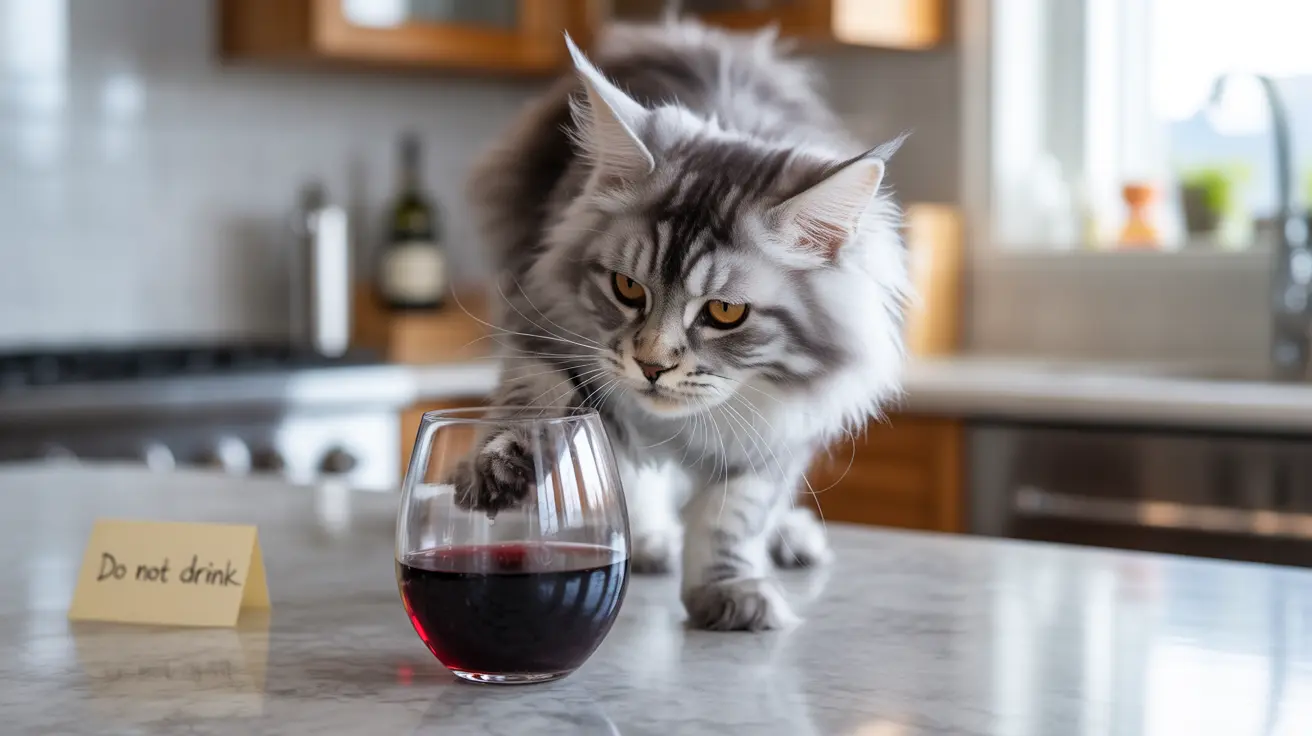Common Sources of Alcohol Exposure in Cats
Cats can encounter alcohol through various sources, not just traditional alcoholic beverages. Understanding these potential hazards is crucial for prevention:
Alcoholic Beverages
Beer, wine, and spirits pose the most obvious risk. Even a few laps from an unattended glass can be dangerous for your cat's small body mass.
Household Products
Many common items contain potentially harmful amounts of alcohol:
- Hand sanitizers and disinfectants
- Perfumes and colognes
- Mouthwash
- Cleaning solutions
- Some medications
Raw Bread Dough
Surprisingly, uncooked bread dough can cause alcohol poisoning in cats. When ingested, the yeast ferments in the warm environment of the stomach, producing ethanol.
Signs and Symptoms of Alcohol Poisoning in Cats
Symptoms typically appear within 15-60 minutes of ingestion and may include:
Initial Symptoms
- Disorientation and stumbling
- Lethargy or extreme drowsiness
- Vomiting and excessive drooling
- Increased urination
Severe Symptoms
- Decreased body temperature
- Slow or irregular breathing
- Muscle tremors or seizures
- Loss of consciousness
- Dangerously low blood sugar
Emergency Response and Treatment
If you suspect your cat has consumed alcohol, immediate action is crucial:
Immediate Steps
- Contact your veterinarian or emergency animal hospital immediately
- Do not induce vomiting at home
- Keep your cat warm and quiet
- Monitor breathing and consciousness
Veterinary Treatment
Treatment typically includes:
- IV fluid therapy
- Blood sugar monitoring and regulation
- Temperature management
- Possible oxygen support
- Continuous vital sign monitoring
Prevention Strategies
Protecting your cat from alcohol exposure requires vigilance:
- Store all alcohol-containing products securely
- Never leave alcoholic beverages unattended
- Keep cleaning products in locked cabinets
- Dispose of alcohol-soaked materials properly
- Store bread dough safely while rising
Frequently Asked Questions
What are the signs that my cat has ingested alcohol and how quickly do symptoms appear?
Signs typically appear within 15-60 minutes and include disorientation, stumbling, lethargy, vomiting, and excessive drooling. More severe symptoms may develop, including decreased body temperature, irregular breathing, and seizures.
What should I do if I suspect my cat has drunk alcohol or ingested yeast bread dough?
Immediately contact your veterinarian or emergency animal hospital. Do not attempt home treatment or induce vomiting. Keep your cat warm and quiet while transporting them to receive medical care.
How much alcohol is toxic to cats and why are even small amounts dangerous?
As little as 1-2 tablespoons of alcohol can be fatal to cats. Their small body size and limited ability to metabolize alcohol make them extremely sensitive to its toxic effects.
Can household products like hand sanitizer or perfumes cause alcohol poisoning in cats?
Yes, many household products contain alcohol and can cause poisoning if ingested. This includes hand sanitizers, perfumes, mouthwash, and cleaning products.
What treatments do veterinarians provide for cats with alcohol poisoning and what is the prognosis?
Veterinary treatment typically includes IV fluids, blood sugar monitoring, temperature regulation, and supportive care. With prompt treatment, most cats recover fully within 8-24 hours. However, delayed treatment can result in serious complications or death.






